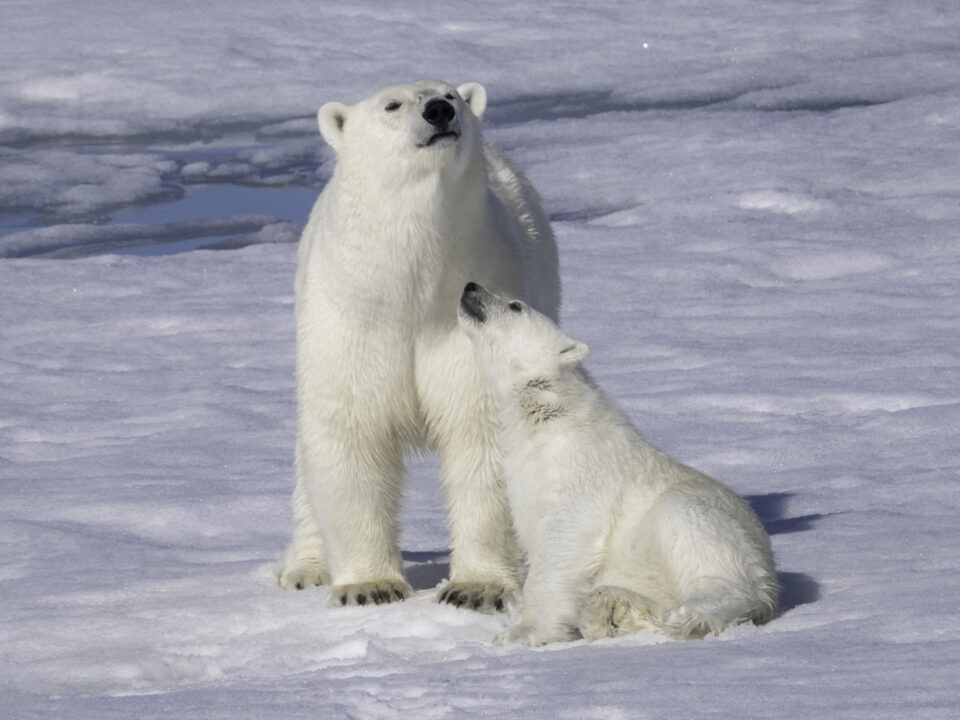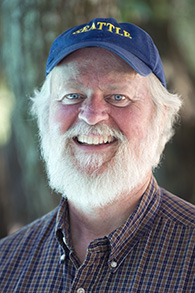It was the “trip of a lifetime!” That is rare for me to write since I have been on many “trips of a lifetime” over our 43 years offering photography tours. But this trip was exceptional—even for me! We spotted 53 individual polar bears on our 17-day 2023 Ultimate Pack Ice Voyage—and we photographed most of them, many at close range as they approached our ship while we were far out in the sea ice.
Our photographers had many wonderful encounters with females with twin cubs of the year (newly out of their natal dens in February), females with older yearling (second-year) cubs, big males, bears with kills, bears swimming and ice-hopping between the ice floes, cubs playing, bears sparring and featured as a small element of a large, spectacular high arctic landscape.
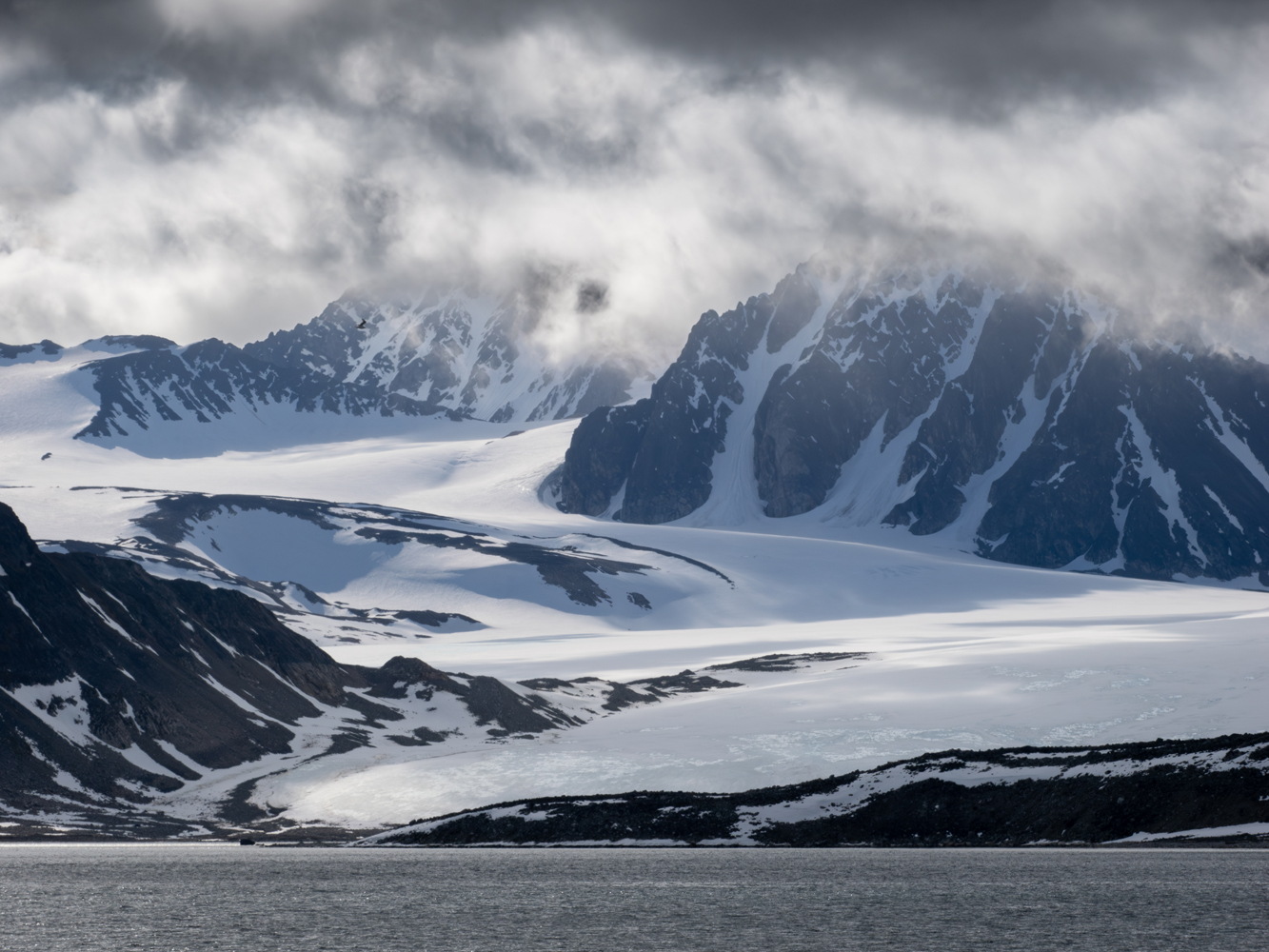
Our group met on the dock in Longyearbyen—the largest settlement on the island of Spitsbergen in Norway’s territorial Svalbard archipelago. From the town dock we “Zodiaced” with our gear to our ship and got settled into our cabins for our epic adventure. We departed just prior to dinnertime.
Our first full day started with beautiful sunshiny weather as we explored Smeerenburg Fjorden in the morning and Raudfjord in the afternoon. The weather was perfect to do panoramic landscape images of the rugged coastline. Our first bears were met with much excitement on deck—a female and a yearling cub. Thousands of images were cranked through our cameras—but they were distant, and on land, and I assured everyone that these images would soon wind up as rejects in our deleted files!
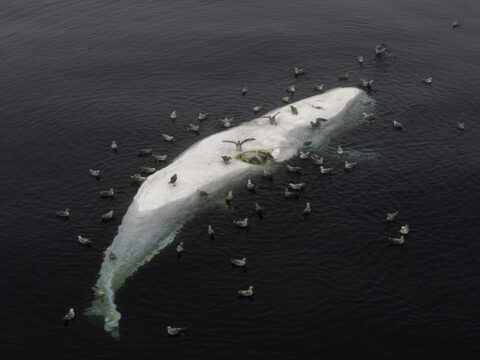
Late that afternoon we were above the northern limit of the archipelago (about 650 miles, 1046 kilometers from the North Pole) and thick fog was setting in. And then something extraordinary happened—something comparable to winning a lottery. The bridge crew had spotted a mass of northern fulmars (albatross relatives) swarming around what they thought was a piece of ice floating in the open ocean relatively far from land. But it wasn’t ice. It was a dead sperm whale. And not just any dead sperm whale—but a totally white one, perhaps an albino, still in almost perfect shape. We had found the corpse of Moby Dick! As the group created thousands of images of the event, few at the time realized that this might be among the rarest photo opportunities they will ever have in their lifetime. To think of the chance of coming across a floating dead whale in thick fog was a rare enough event, but to encounter a huge white male sperm whale, reminiscent of the writing of Herman Melville, seemed almost mythological.
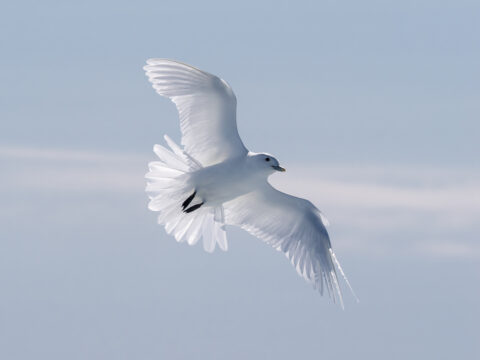
The fog persisted off and on for a couple more days but that did not stop us from finding polar bears on the pack ice and “shooting” them to create ethereal images we could not duplicate after the fog lifted when sunshiny days followed for the rest of the trip. Birds trailed our ship almost constantly presenting good opportunities to photograph black-legged kittiwakes, glaucous gulls, and the occasional ivory gull as they followed, searching for food stirred up in our wake as we rounded Spitsbergen, heading south down Hinlopen Strait. Flocks of dovekies (little auks) thick-billed murres (Brünnich’s guillemots) and a few Atlantic puffins flew across our bow.
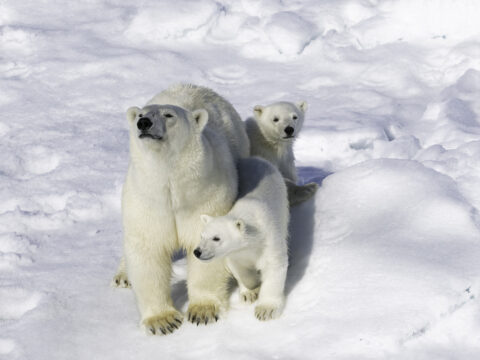
After consulting ice charts, we entered the sea ice south of Brasvellbreen, Nordauslandet. We stayed in this ice for the next five days. Our first day in this ice area yielded ten bears including a female and her yearling cub, a female and her two cubs-of-the-year (coy’s) on a seal kill. During this time, we would park the ship in the ice and wait as bears came to us to check out our ship, curious about this big object parked in their icy world. We watched and photographed around 40 individual bears while in this ice including two sets of females with their coys and two sets of females with yearlings. Of course, there were numerous cub-free single bears with a few huge males, lots of females, and plenty of photogenic interactions between them. Since there was 24 hours of daylight it was not uncommon for some of us to be photographing bears visiting the ship until after “midnight.”
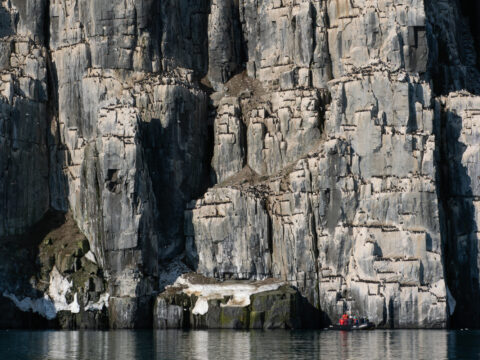
We left the ice and sailed overnight to Alkenfjellet—“the mountain of the guillemots.” Here are towering sea cliffs as beautiful as any featured in Chinese scroll paintings, and home to a truly spectacular seabird colony of 60,000 pairs of murres, plus kittiwakes and glaucous gulls. These sheer cliffs are around 330 feet (100 meters) tall and are an impressive example of doleritic intrusions from the Jurassic or late Cretaceous period. We left our ship in five Zodiacs to get an up-close-and-personal view of the nesting birds and these photogenic cliffs. While “Zodiacing” we spotted a few arctic foxes in their scruffy summer coats marauding these treacherous cliffs to steal murre eggs and newly hatched chicks from the cliff’s precipitous ledges. That evening we found numerous female walruses and their calves floating on loose pack ice or swimming around it. The light was beautiful.
The bear photography was so good south of Nordauslandet that we returned to it for two more days. We just couldn’t get enough of the incredible bear photo opportunities!
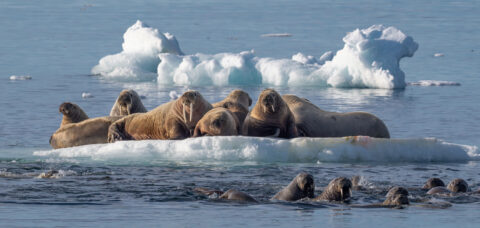
We slowly started our multi-day return cruise to Longyearbyen with our first stop in the morning at Monaco Glacier. The light was harsh and unappealing, so we headed to Bockfjord and landed where the tundra was in full bloom with moss campion, mountain avens, arctic bell-heather and several saxifrage species predominately. The area also featured nesting ruddy turnstones and purple sandpipers—though we steered clear of them. We decided to give the Monaco Glacier another try in the “evening.” This time we arrived in beautiful light that countless times excited our camera sensors.
Another overnight cruise found us on the beach at Sarstangen in the afternoon. Sarstangen is a reliable location where a herd of male walruses hauls out to molt their fur and replace it for the winter. Our group landed at a distance with little or no notice from these big beasts. After we stood there for a while, several curious individuals swam in to closely check us out.
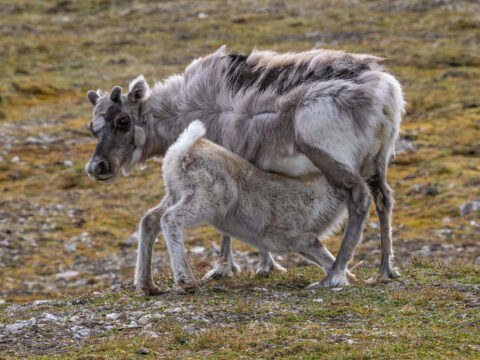
Overnight towards Longyearbyen, this time stopping at Alkhornet. Here is a reliable site to photograph diminutive Svalbard reindeer, which due to its genetic isolation is now considered by many researchers to be a distinct species from mainland reindeer. During the short Arctic summer, Svalbard reindeer feed on lush tundra plants, including grasses, herbs, sedges, and deciduous shrubs of the lowland plains—like is found on Alkhornet—to accumulate fat for the winter. We found a small herd, 15 or so scattered at the base of the mountain slope and a snowfield that included a small, highly photogenic calf. A pair of nesting parasitic jaegers (arctic skuas) kept a watchful eye on us with the male occasionally landing close to us to make sure we watched him and not the distant nest. A few hours after dinner we arrived at Longyearbyen and anchored for the night. We would catch our next day flights back to Oslo for travel onward.
It was a mind-blowing trip that I will remember as long as I live—one of those true “trips of a lifetime!” The trip was so good I am considering offering another 17-day Ultimate Pack Ice voyage again in 2025—though I had planned for the 2023 trip to be a “one-off” event. If you are interested, please send us an email to info@photosafaris.com and we will add you to our interest list.
